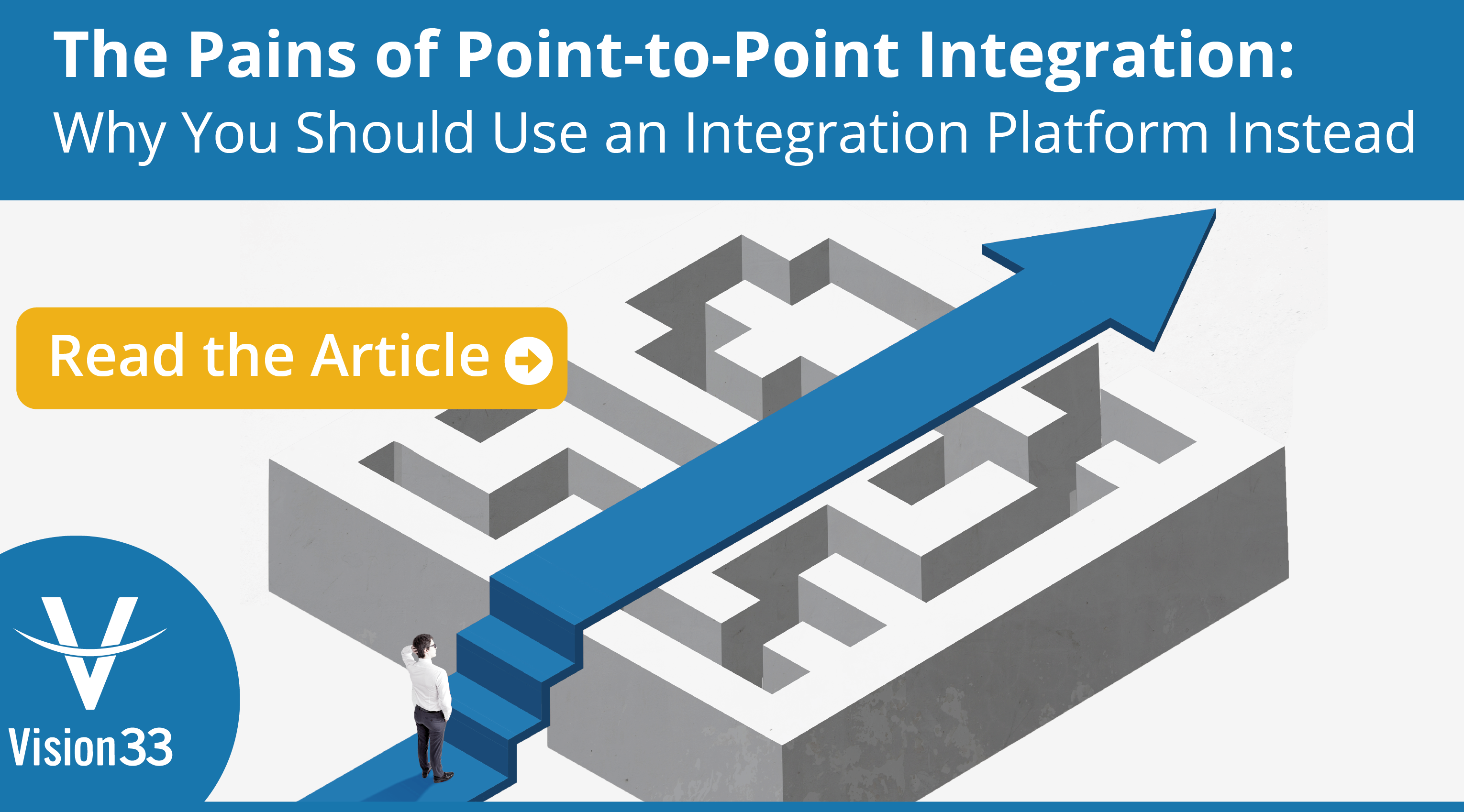5 Things You May Not Know About SAP Business One
SAP Business OneYou don’t switch business systems every day, so it’s critical to separate fact from fiction when...

July 23, 2020
Blog > Why You Should Use an Integration Platform | Saltbox
You should use an integration platform instead of a point-to-point integration because as your business grows, multiple point-to-point connections are challenging to maintain. In the last ten years, software suites have fallen out of favor; companies now use best-of-breed systems with numerous independent products that must work together. This change in system configuration means products must transfer and transform data between systems continuously, often in real-time.
This change also creates an ongoing burden of maintaining integrations between multiple systems and tools. The result is that businesses lack the flexibility to integrate new systems or switch systems as demands change.
An integration platform acts as a central connection hub and eliminates the complexity of connecting multiple systems. It replaces your enterprise resource planning (ERP) or customer relationship management (CRM) software as the hub, so all applications connect to it and work together. The more applications that require integration, the more valuable the platform becomes.
Companies on digital transformation journeys want to create new integrations and workflows as business activities/conditions change, like needing legacy on-premise software to integrate with web applications and remote access for remote employees.
Businesses that initially had only brick-and-mortar stores now want online stores. This presents challenges regarding importing and exporting data from an eCommerce platform to your central business system and routing fulfillment and shipping information to notify customers of deliveries.
Integrating two applications equals one connection. Three applications, three connections. But integrating four applications equals six connections, while five applications equal ten connections, and six applications equal fifteen connections – and it only gets more complex.
As your business adds best-of-breed products like eCommerce, CRM, and shipping automation, a robust system to manage everything in a central, easy-to-use location is necessary. This is where an integration platform shows its value. Having access to monitor, update, add, or change multiple integration projects and workflows in a single location is invaluable for consultants or developers maintaining your business systems.
When your application is integrated with a platform, rather than point-to-point, it’s easier to exchange one application for another without disrupting your entire environment. Vision33’s Saltbox Platform and connector integrations provide the pathways to add new systems and processes and modify existing processes for greater flexibility in a constantly shifting economy.
Consider an integration platform that scales to volume demands, easily maps fields for application integration, and automatically transforms data formats during transfer.
Integration platforms provide additional tools that free up time and resources to be used more productively elsewhere. With the Saltbox Platform’s intuitive error tracing, your team can easily review errors and failed transactions and quickly understand and correct issues without sifting through lines of code and repeatedly testing. With tools like accurate dashboard reporting and workflow metrics, your team can quickly review and understand the status and volume of your integrations.
You can easily add modern products with application programming interfaces (APIs) to the Saltbox Platform with an industry or custom connector. If there’s no API, you can integrate via file-based import and export.
The Saltbox Platform’s innovative workflow builder allows you to understand the steps in workflows and create new workflows. The webhook support works with application webhooks to reduce the volume of system traffic, application speed, and integration speed.
Many organizations decide that the cost of software integration is too high and require their staff to enter business data manually – without acknowledging the significant costs associated with manual data entry. Without integrating critical business systems, your employees waste valuable time filtering through and correcting data and entering it in your central business system. There are also costs for data entry errors, including unhappy customers if they don’t receive the correct order or their invoice is wrong.
There’s also an opportunity cost of not innovating, which may include deploying mobile applications, a better supply ecosystem integration, and a better sales ecosystem integration. If you’re not innovative with your digital transformation, other organizations may find it difficult to work with you – a cost of lost business.
If you choose a point-to-point integration versus an integration platform, you’ll encounter unnecessary development costs – money you could better utilize elsewhere. To understand the return on investment (ROI) of choosing an integration platform, you must consider the cost of maintaining your current point-to-point integrations and workflows, including the costs of staff, time, software, and hardware.
Integration platforms dramatically minimize the need for developer resources, as they include creative tools like a visual workflow designer and data mapper. The Saltbox Integration Platform ensures that innovation happens close to the business with a "low code" platform rather than development projects. This means projects happen faster, with fewer revisions during the integration process.
With Saltbox, the opportunities to integrate and extend your business applications are limitless. You no longer have to imagine how much smoother your business would operate if information flowed seamlessly between your web portals, sales systems, marketing software, and ERP system – Saltbox makes it a reality.
To learn more about the Saltbox Platform, check out the video recording here.
Subscribe to our newsletter to receive our latest blog posts, case studies and ERP news delivered straight to your inbox.
You don’t switch business systems every day, so it’s critical to separate fact from fiction when...
An integration platform as a service (iPaaS) solution is a unified integration layer that supports...
[Updated] One integrated solution streamlines operations, whether you distribute soft goods, hard...
Recieve our latest blog posts, case studies, and ERP news
delivered straight to your inbox.